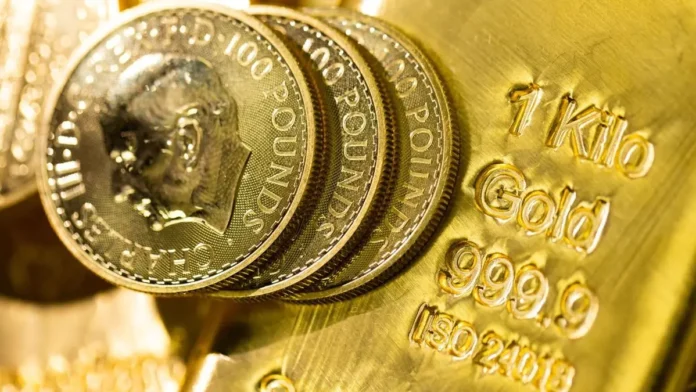The global economy is currently facing a significant shift as the US dollar continues to weaken against major currencies. This development has had a significant impact on various sectors, with energy products taking the hardest hit. On the other hand, precious metals, which have been on a steady rise, have started to pare gains as investors react to the weakening dollar.
The US dollar has been the dominant currency in global trade for decades, and any fluctuations in its value have a ripple effect on the global economy. Recently, the dollar has been on a downward trend, losing ground against major currencies such as the Euro, Japanese Yen, and British Pound. This has been attributed to various factors, including the ongoing trade tensions between the US and China and the Federal Reserve’s decision to keep interest rates low.
The weakening dollar has caused a domino effect on the energy sector, with oil prices tumbling to multi-month lows. The oil market, which is traditionally priced in US dollars, has been hit hard as the weakening currency makes oil more expensive for non-dollar denominated buyers. As a result, demand for oil has dwindled, and this has put pressure on oil prices, which have been on a steady decline.
The impact of the weakening dollar has been felt across the energy sector, with renewable energy companies also taking a hit. The renewable energy market has been booming in recent years, with many countries shifting towards clean energy sources. However, the weakening dollar has made it more expensive for countries to invest in renewable energy, thus slowing down the sector’s growth.
While the energy sector has been struggling, precious metals, which are traditionally seen as a safe haven during times of economic uncertainty, have been on a steady rise. Gold, in particular, has been gaining momentum in the past few months, reaching all-time highs. However, even this sector has not been immune to the impact of the weakening dollar.
As the dollar weakens, investors have started to pare gains on precious metals, shifting their focus to other currencies. This has resulted in a slight dip in the value of precious metals, signaling a potential end to their steady rise. However, analysts believe that this is only a temporary setback and that precious metals will continue to be a safe haven for investors in the long run.
The weakening dollar has also had an impact on the stock market, with companies that rely heavily on exports taking a hit. As the dollar weakens, it becomes more expensive to buy American goods and services, making them less competitive in the global market. This has resulted in a decline in stock prices for such companies, further adding to the economic uncertainty caused by the weakening dollar.
Despite the recent turbulence in the market, there is no need to panic. The weakening dollar is not necessarily a bad thing for the global economy. In fact, it can bring about positive changes in the long run. A weaker dollar can boost exports and make American goods more attractive in the global market, thus stimulating economic growth.
Moreover, a weaker dollar can also attract more foreign investment, which can help boost the US economy. As the dollar becomes cheaper, it becomes more affordable for foreign investors to buy American assets, which can lead to an influx of capital into the country.
In conclusion, the weakening dollar has had a significant impact on various sectors, with the energy sector worst hit. However, this development should not cause panic as it can bring about positive changes in the long run. The key is for businesses and investors to adapt and make the most of the current situation. As the saying goes, every cloud has a silver lining, and the weakening dollar may just be that for the global economy.


